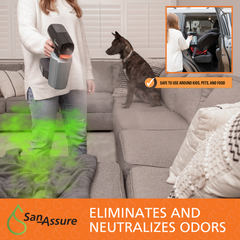
Residential, Commercial & Hospital Disinfectant

The gym is a place where people come to improve their physical fitness and overall well-being. However, it is also an environment where various skin infections can easily spread. While many may associate infections with coughs and sneezes, it is the skin that is most vulnerable to these harmful pathogens. Gym equipment, locker room showers, and shared surfaces serve as breeding grounds for bacteria, viruses, and fungi that can cause discomfort and even serious skin conditions. This article provides invaluable tips from experts on how to avoid picking up skin infections during your gym sessions.
Folliculitis is an infection that manifests as itchy red bumps or acne-like formations. Scratching these spots can lead to the development of crusty sores, which may cause permanent scarring. Sweat produced during workouts increases the susceptibility to this condition. Severe cases of folliculitis are primarily caused by Staphylococcus bacteria, as per the Mayo Clinic.
Athlete's foot, classified as a type of ringworm, typically affects the feet. It first presents as an itch around the soles of the feet and is often accompanied by dry, cracked skin between the toes. This condition can also result in itchy blisters. Gyms and fitness centers provide an ideal environment for the growth and transmission of this foot fungus due to the high moisture levels in places like locker room showers. Contact with contaminated surfaces such as locker room floors or shared mats, as well as sweaty gym shoes, can exacerbate the spread of this ringworm.
Impetigo is a highly contagious infection caused by Streptococcus or Staphylococcus aureus bacteria. These bacteria can enter the body through breaks in the skin or even healthy skin. This infection starts as red, itchy sores that eventually rupture and form honey-colored scabs. Warm and humid gym environments, along with skin-to-skin contact or contact with contaminated surfaces, provide favorable conditions for the transmission of impetigo.
To safeguard yourself and prevent the acquisition of skin infections at the gym, experts recommend the following strategies:
✨Wear loose-fitting, moisture-wicking clothes: Opt for clothing that keeps your skin dry during workouts. Remember to wash sweaty gym clothes, swimsuits, and used towels after every use.
✨Safeguard your skin: Always keep any cuts clean and covered. Refrain from using locker room showers, steam rooms, saunas, or hot tubs until your wound has healed. Consider using a barrier, such as a towel, between your skin and equipment that others use, such as weight-training machines and exercise bikes.
✨Avoid walking barefoot: Never go barefoot at a public gym. Wear proper athletic shoes while working out and utilize flip-flops when navigating around pools, locker rooms, and showers.
✨Maintain proper hand hygiene: Wash or sanitize your hands immediately after exercising to minimize the risk of transferring pathogens to your skin.
✨Clean and disinfect equipment: Before and after using any fitness equipment, ensure you clean and disinfect it thoroughly. San-assure, a powerful disinfectant, is an excellent choice as it effectively eliminates 99.9% of viruses and bacteria, including MRSA. Make sure to follow the two-step process: first, spray and wipe the equipment with San-assure to clean, and then spray and leave it on to disinfect. If you notice any dry disinfectant residue buildup, gently wipe down surfaces with a moist towel or microfiber cloth to prevent fabric discoloration. Additionally, San-assure can sanitize and deodorize soft surfaces like gym bags and shoes.
By adhering to these expert tips, you can significantly reduce the risk of contracting skin infections at the gym. Maintaining good personal hygiene, wearing suitable clothing, and regularly cleaning and disinfecting gym equipment are essential practices to adopt. The overarching goal is to promote a safe and clean gym environment, enabling everyone to focus on their fitness journey without the worry of skin infections.
Search
About
Technology
Resources
Professional Use
Contact
Newsletter
Accessibility
Terms of Service
Refund Policy
Privacy Policy
Warranty Registration
San-Assure provides multi-surface cleaning solutions that allow you to disinfect and sanitize every surface in your home. Our EPA-Registered sanitizer is safe to use and our electrostatic attraction technology provide full coverage disinfecting.
*simulated image.







